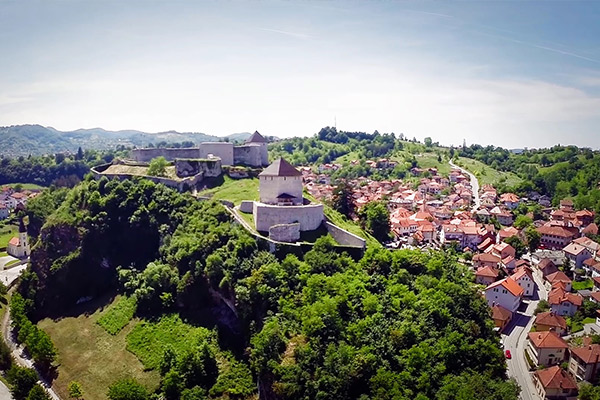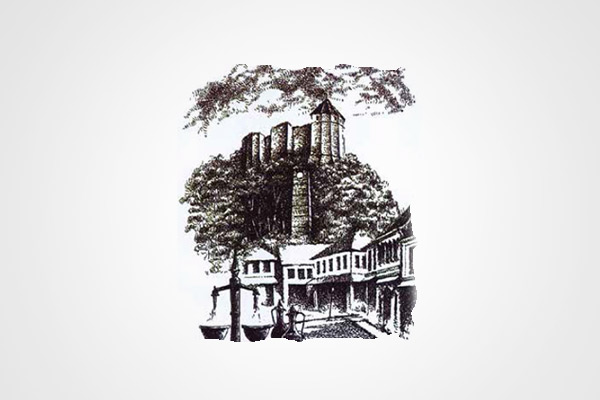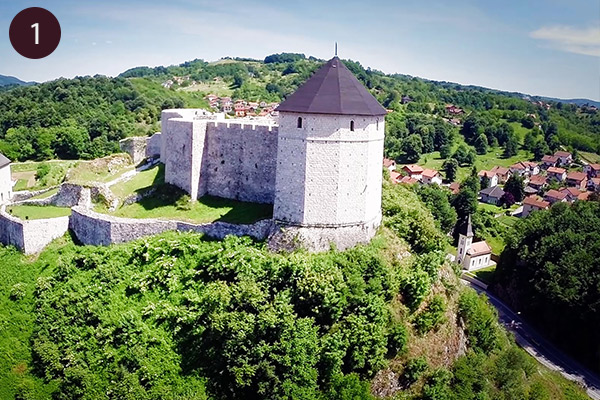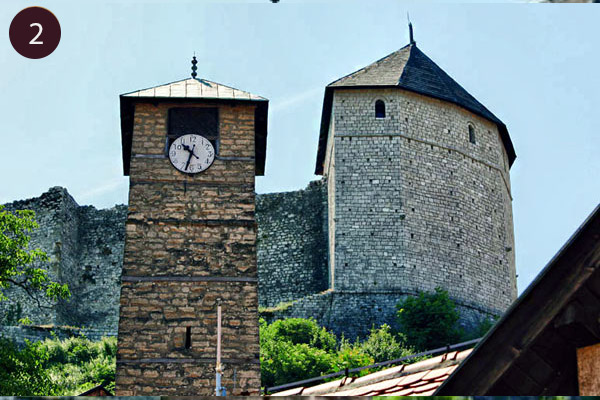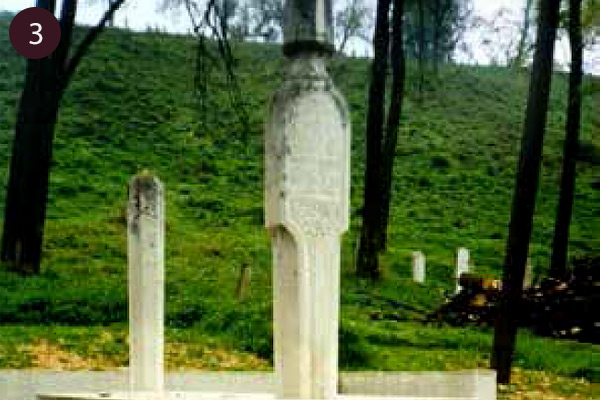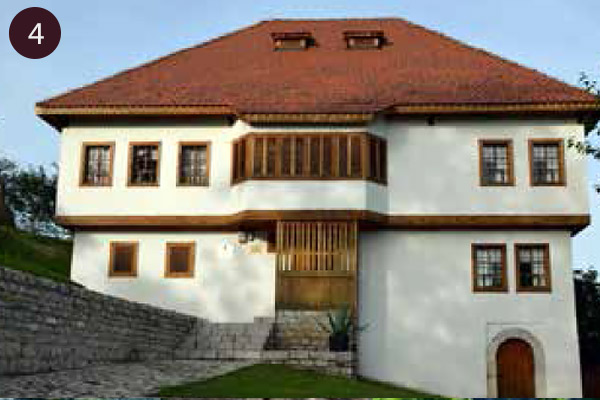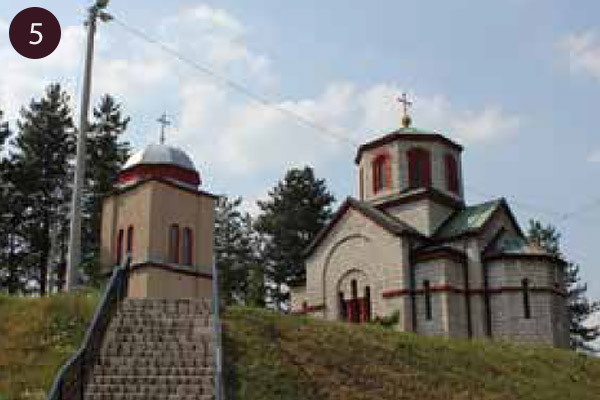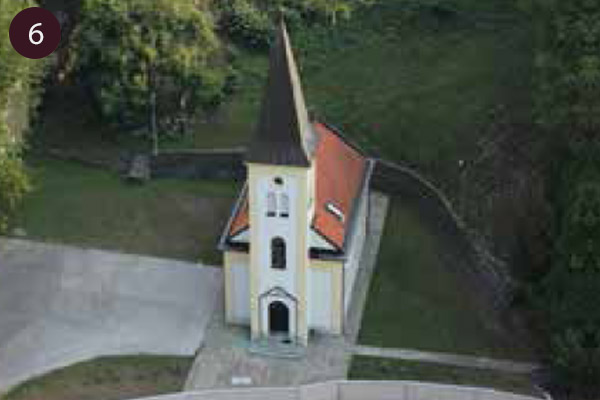1 – Gradina/Fortress
National monument: In the history of City of Tešanj, especially significant is the Gradina, fortress which dominates the surroundings and one of the most significant fortresses in BiH. The complex of the fortress was made in period of early history. The construction was started by Ilirs, completed by Romans and afterwards extended by the Ottomans and Austro-Hungarians. Franciscan Ivan Frano Jukić called it The White Swan in the hills and the fortress which consists of the Dizdar’s and Kapetan’s towers (Guardian’s and Captain’s) is the symbol of the resistance and pride of the city. In Dizdar’s tower there is a permanent museum setting of Public Institution of Museum Tešanj.
2 – The Clock Tower
In the seventeenth century Tešanj attained the 18,5 meters clock tower. The earlier clock was showing the time „alaturka“ while nowadays it shows the Central European Time. It was a gift by the Fehim-bey Smailbegović to the City of Tešanj in 1890. Out of 21 clock towers built in Bosnia and Herzegovina, the Clock Tower of Tešanj belongs to those 4 still working today – the clock was brought from Vienna.
3 – The Tomb of the Poet Musa Ćazim Ćatić
Musa Ćazim Ćatić, the poet whose life is even today considered by many as the ideal of freedom and bohemian life style is one of the greatest Bosnian poets, whose destiny connected him to Tešanj. At his final resting place in Tešanj the following words were carved: “Here lies a poet of excellent gift, who did not seek honor nor profit but lived bohemian and sang grand, until death escorted him to this grave.”
4 – Eminagića House
National monument:This is the oldest and the most beautiful building of the family architectural heritage in Tešanj and is deemed to date back to 1860. It belonged to the Eminagić family, the rich aristocrats and merchants and in recent times was renovated by the municipality of Tešanj. The House, namely the hostel, is comprised of magazine, basement (porch, larder, magazine, north-west room, south-west room, south small room and south-east room) and floor. The premises illustrate the elegance and abundance specific for aristocratic families and culture of living at that time.
5 – The Orthodox Church of Presvetog Pokrova Bogorodice
The Orthodox Church of Presvetog Pokrova Bogorodice was built in 1972 and it is famous for its’ middle age icons. The collection of icons was one of the four most valuable in BiH and currently is kept in Bijeljina. During the World War II, the collection was preserved by Mirko Blatandžić, Catholic from Tešanj. During the war in BiH, the collection was kept in the vault of the Privredna Bank Sarajevo in Tešanj.
6 – Catholic Church of Saint Peter and Paul
National monument: There is a local Church of Saint Peter and Paul in Tešanj, which was built in 1898. for the needs of Austro-Hungarian officials and it was thoroughly restored between the 1998. and 2002. The family of Hasan Ahmetlić with its donations renovated the Church in 2014.
